Until this trip I had never been to Alabama. Once, I drove through Mobile on my way to Florida, skipping across the foot of the state where it dips its toes into the gulf, but claiming this as “being to Alabama” would be akin to saying I had experienced the lower stratosphere on my Delta flight to Atlanta.
Alabama is wonderfully green. The Black Belt name comes from the rich, dark soil historically ideal for cotton cultivation, but most of my time spent sitting near the ground of the Twin Oaks plantation exposed the light-colored sandy loam of the coastal plains, which, when disturbed, produced a fine dust that swirled and glittered in the air.
This was my first turkey hunt. To say that I had tried in the past would be a stretch. I remember being handed a shotgun as a child and then abandoned under a pine tree in the predawn hours with instructions to “shoot a turkey if you see one.” I am not counting that experience.
The Black Belt and the Ghost of the Bobwhite Quail
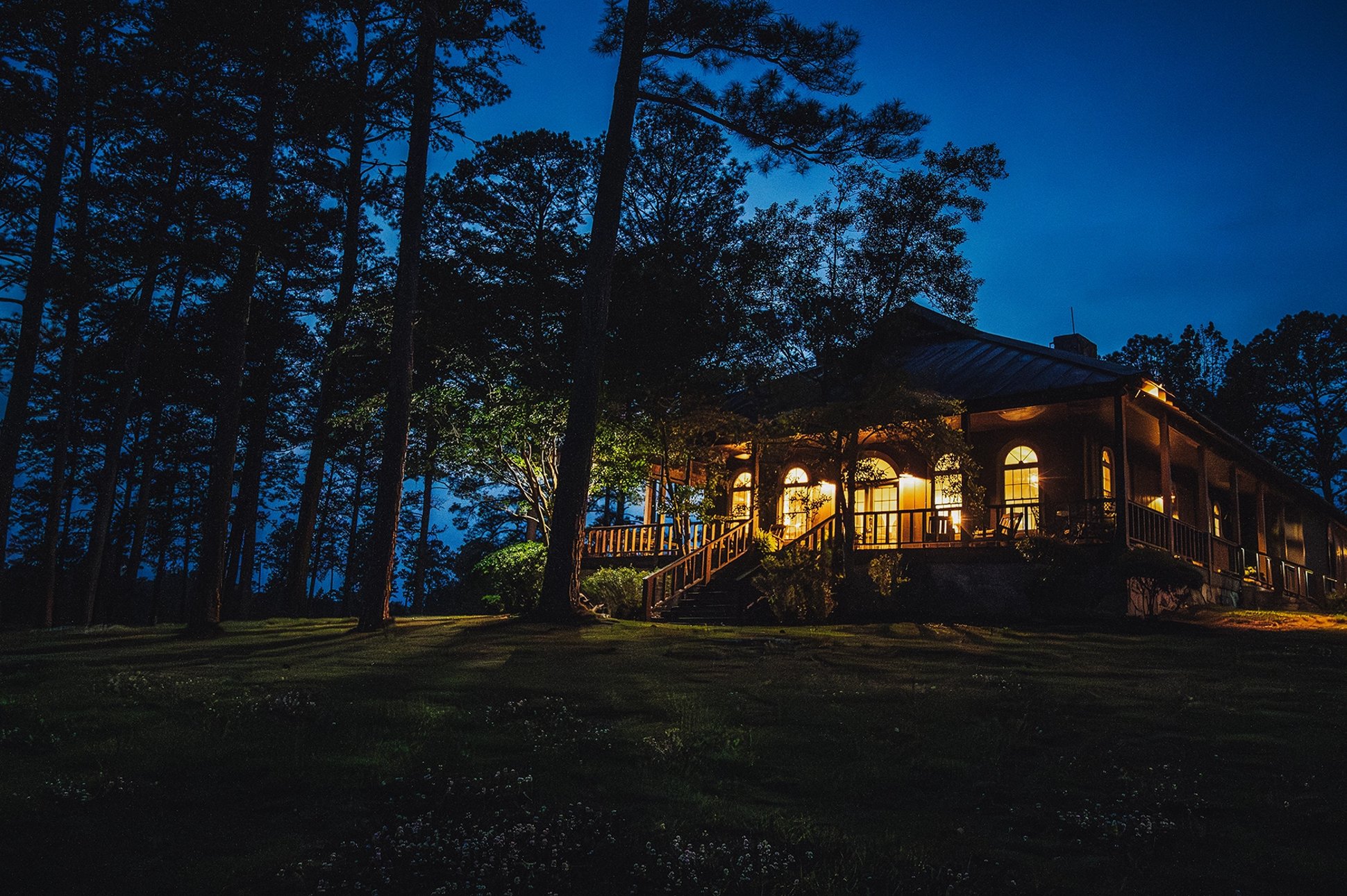
My Alabama trip came about by invitation from the Alabama Black Belt Adventures Association (ALBBAA), a non-profit organization promoting outdoor recreation and tourism throughout the 23-counties that make up the Black Belt region.
I joined the media group at Shenandoah Plantation. Introductions were made over cocktails and charcuterie in a cozy gazebo overlooking the small lake that bent around the main lodge a short distance up the hill. Shenandoah would be our base of operations for the next few days of hunting.
It's situated in what is called the Alabama Quail Trail, and the plantations around Bullock County seem mostly dedicated to upland hunting. The Bobwhite quail native to the area peaked in the 1960s and have been in decline since. Some estimates are as high as 85% population loss for the native birds.
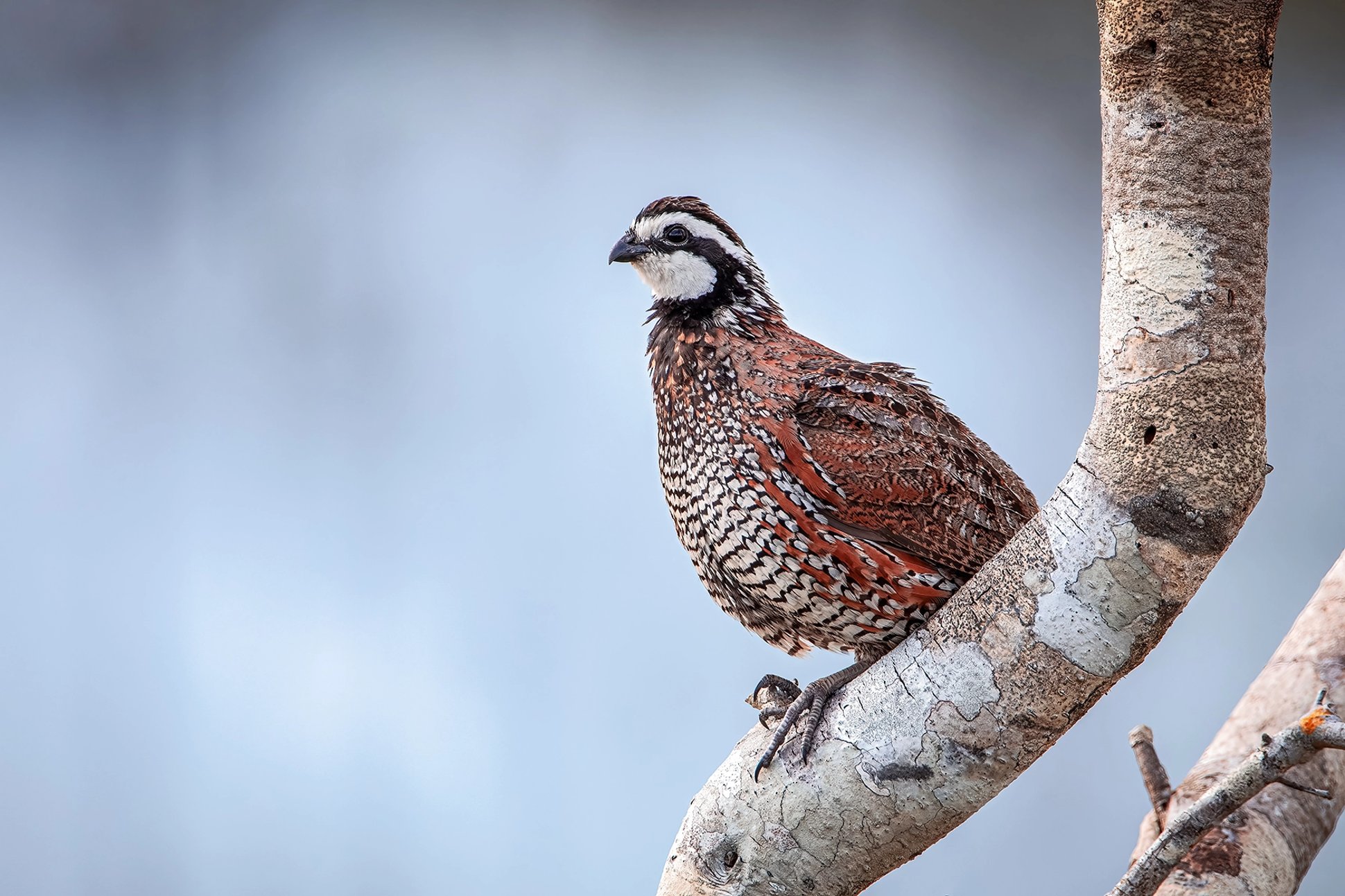
If you ask 10 different people you seem to get 10 different answers as to what happened to the wild quail, but it seems to boil down to habitat loss in one form or another: a familiar story. Many plantations use planted birds these days, but you can still find coveys of native birds around the area.
It wasn’t the Bobwhite quail hunting specifically that put the region on the proverbial map, but the field trials for bird dogs. In 1928 Lewis B. Maytag, the son of the founder of the appliance company bearing his surname, attended a field trial in Bullock County and was so impressed by the quality of birds in the area that within two years he had purchased 12,000 acres in the region that he named Sedgefields Plantation (today, it’s Sedgefields Lakes Plantation).
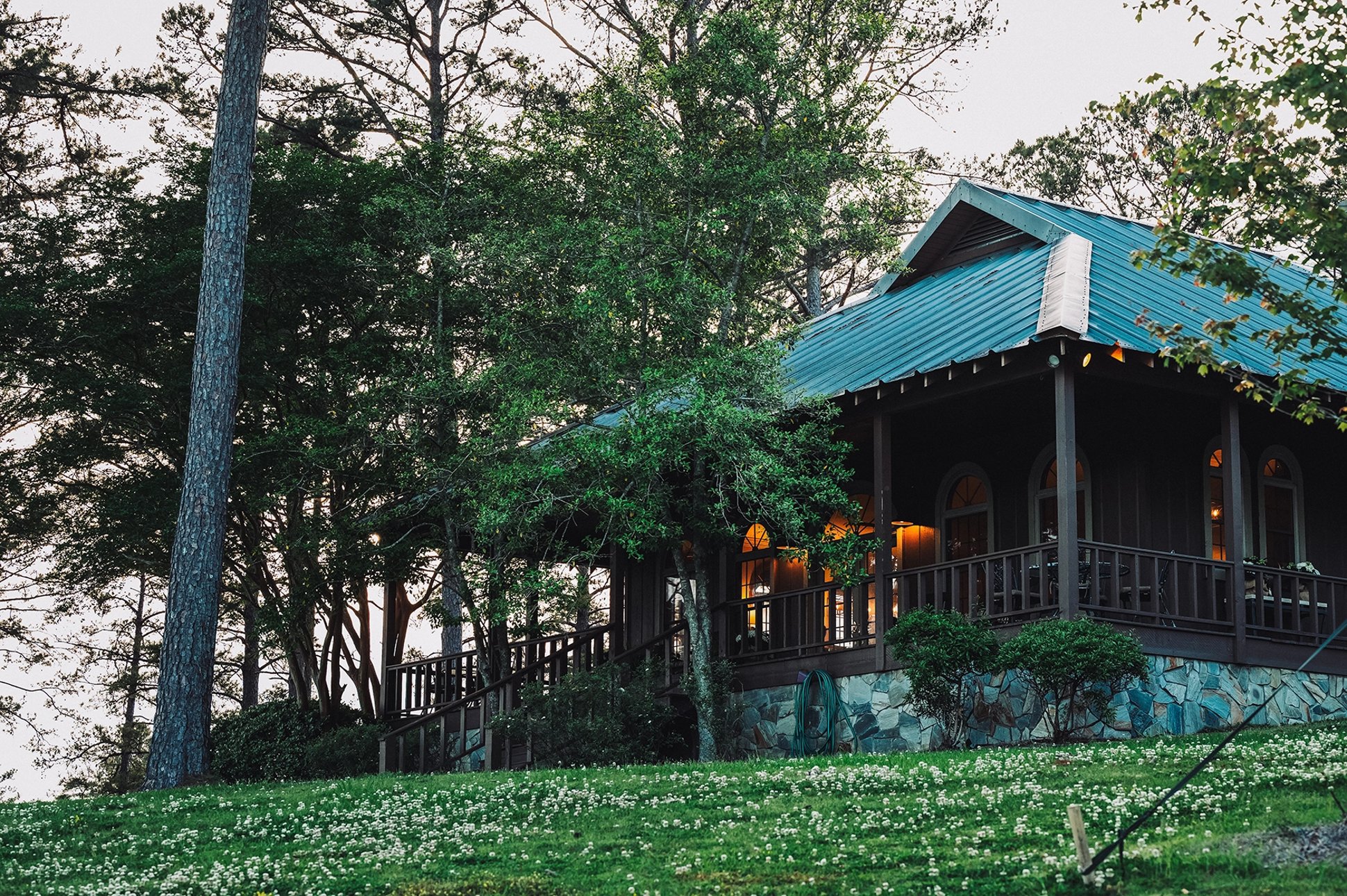
Maytag held his first field trials at Sedgefields in 1937, and since then Bullock County has become the Field Trial Capital of the World.
If you aren't familiar, a field trial is a competitive event that tests how well-trained pointing dogs perform in simulated hunting conditions on a designated course. They are judged not on the number of birds, but also on their style, obedience, ground coverage, and stamina as they search, point, and flush birds.
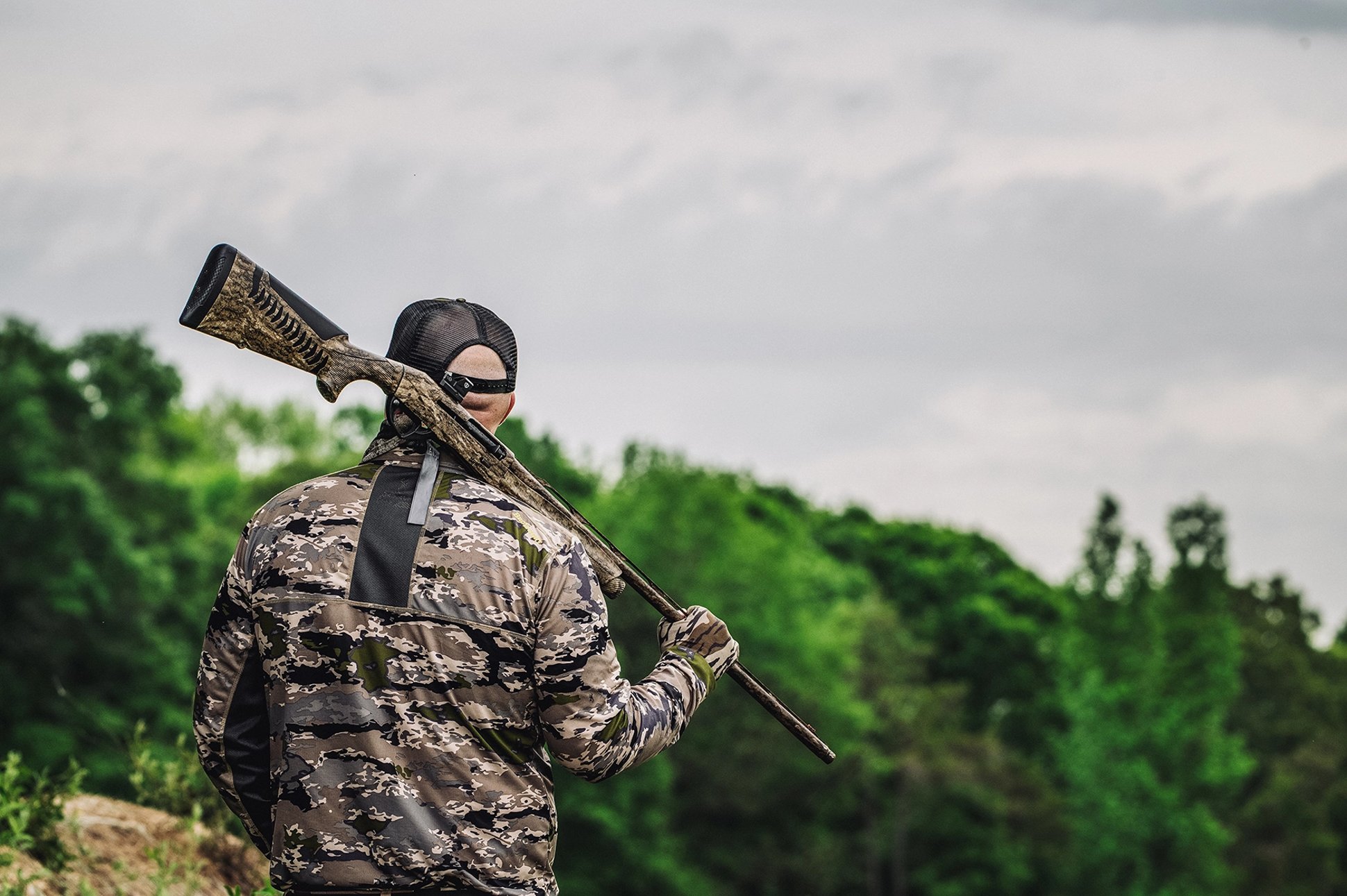
This, at least, is my basic understanding after touring Sedgefields and speaking with the property manager, standing on the porch of the Field Trial headquarters, overlooking the green rolling hills crisscrossed with the brown of recent prescribed burns.
The place felt old in the humid afternoon. I imagined men on horseback following dogs, 100 ago, flushing covey after covey, the quail seemingly as plentiful as mosquitos. But I was not in Alabama for upland hunting. Enough about quail, let’s talk turkey.
'In The Face': A Virgin Turkey Hunter’s Baptism
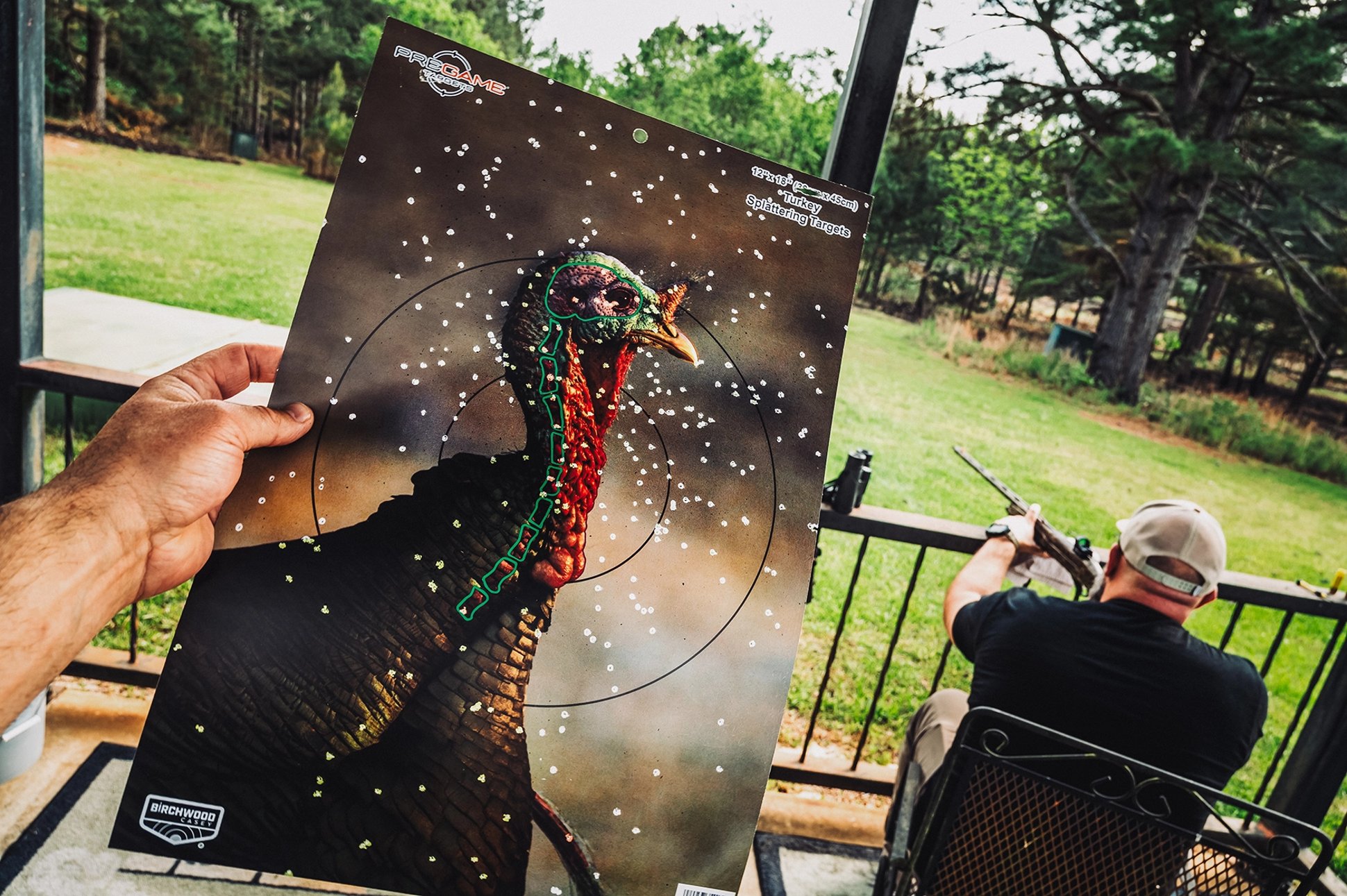
“If you live in Alabama, you are coming to the Black Belt to hunt.”
Alabama is home to the Meleagris gallopavo silvestris, or eastern wild turkey, which are known to be notoriously difficult creatures. I was told that “an eastern turkey is the hardest thing in the world to kill, until it's ready to die.” A tad dramatic, but it stuck in my head.
I had the pleasure of being paired up with Jeremiah Doughty, a hunter and wild game chef from southern California who founded From Field to Plate, an online resource dedicated to cooking and butchering wild game.
When Doughty learned that this was my first “real” attempt at a turkey, he insisted I get the first shot at any birds we encountered. I know that the south is known for its polite hospitality, but Doughty seemed truly distressed that I had never experienced the thrill of blasting tungsten super-shot at a gobbler’s head.
Benelli Turkey Guns Paired with Riton Optics
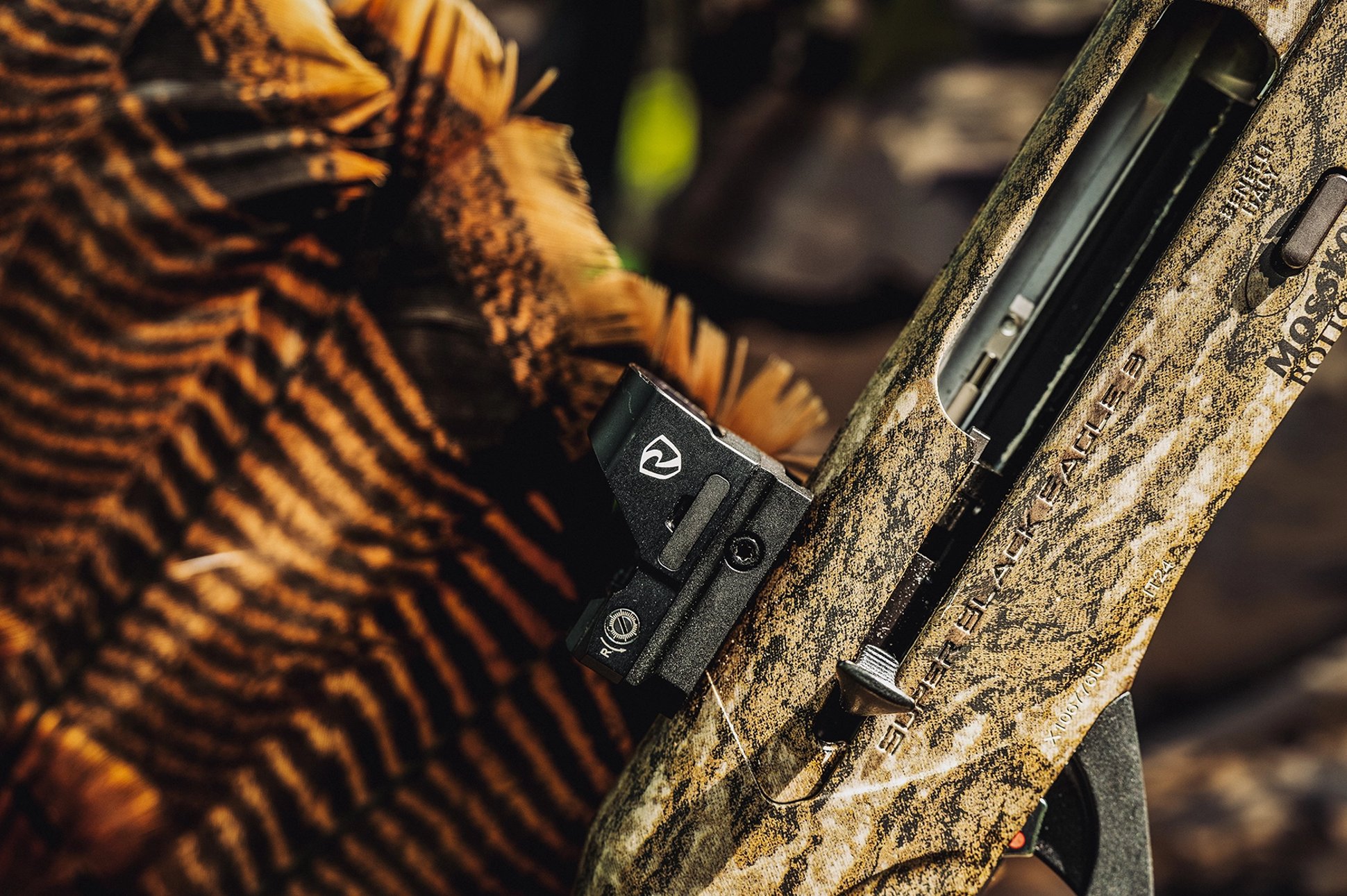
For the hunt, we were provided with 20-gauge Benelli Super Black Eagle shotguns outfitted with Riton 3 TACTIX PRD 3 red dots. The sleek, lightweight, semi-auto shotgun was finished in Mossy Oak Bottomland camouflage and was a pleasure to shoot, even with the heavy Remington TSS loads.
Part of the reason the shotguns have such a small, lightweight profile is due to Benelli’s Inertia Driven System, allowing for less moving parts and a more reliable cycle, which will handle everything from light field loads to 3 1/2-inch magnums.
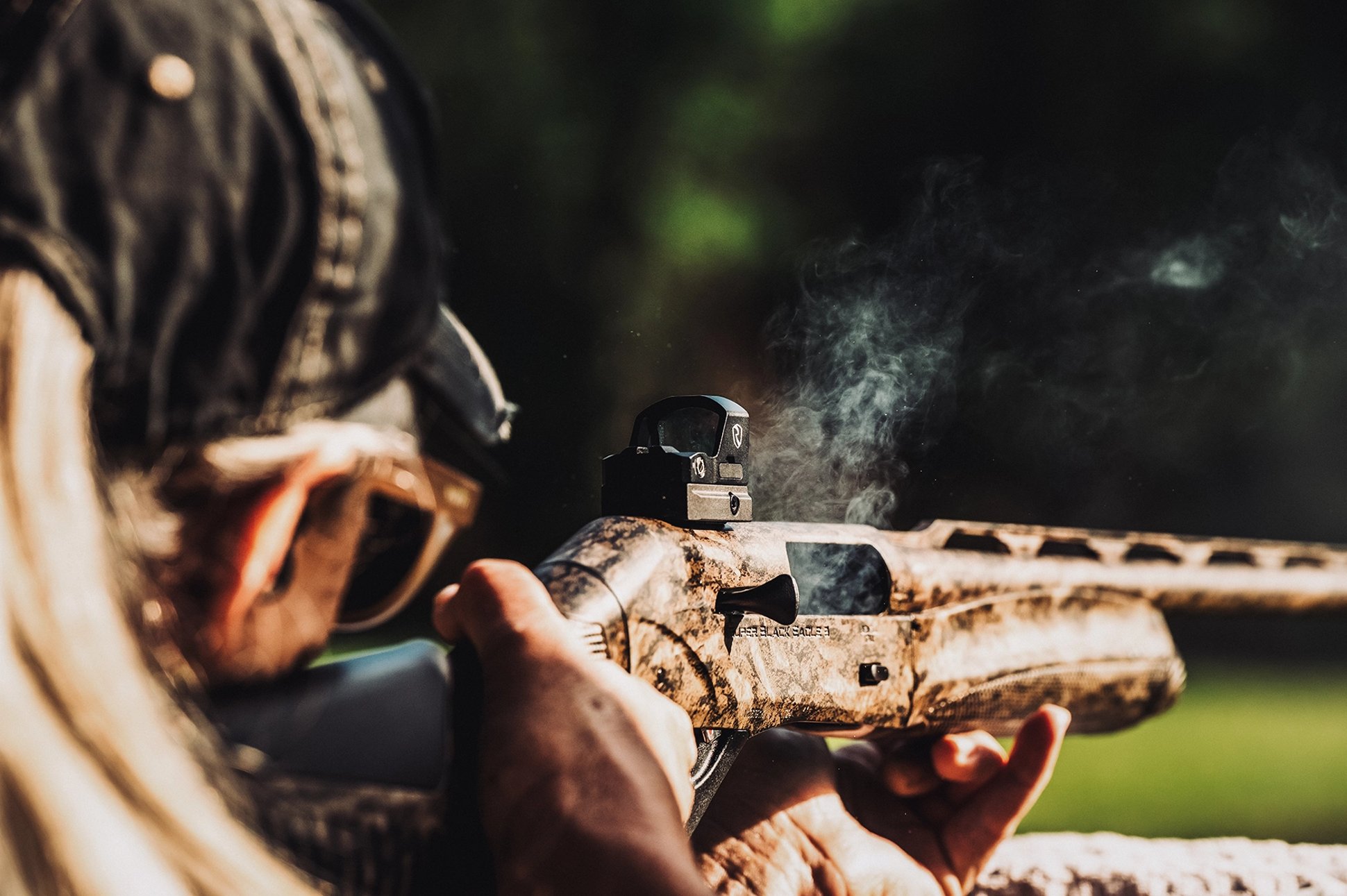
The oversized bolt handle and safety made manipulating the shotgun easy, and the redesigned loading system made loading effortless.
Combined with the Riton TACTIX 3 optic’s clear 2-MOA-dot reticle, side loading battery, motion sensing awake technology, and 50,000-hour battery life, it was about as perfect a turkey setup as I could have hope for, and the results speak for themselves.

Runnin’ and Gunnin’ For Stubborn Late-Season Birds
Hours before sunrise, we loaded into Trey Adkins’ truck. Adkins is the manager and guide for Twin Oaks plantation, which is a 1,700-acre spread on the other side of Union Springs from Shenandoah.
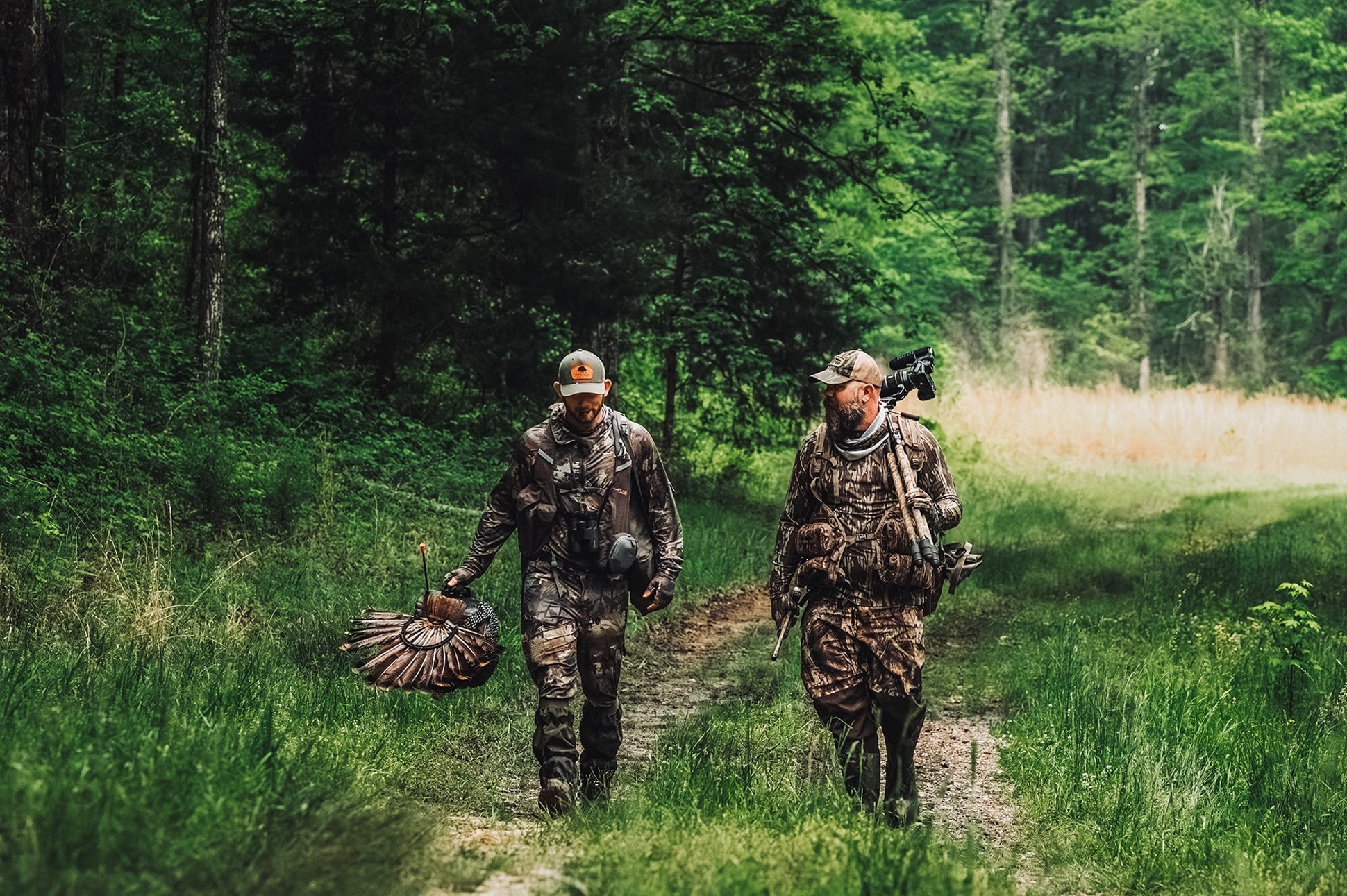
We set up both mornings hidden in the tree line or behind canebrakes near open fields. I sat quietly in the dark, my back grateful for the ground-level folding chair. As the sky brightened, I was just able to make out the brown blob of “Pablo the decoy.”
Adkins would cluck and purr, going back and forth between a diaphragm and a pot call, but the mornings saw no action.
Sometimes, we would hear distant gobbles. We stalked a lone Tom around the edge of a tree line only to have it disappear into the woods. We were hunting late in the season, and the turkeys' behavior was beginning to change. They were quieter, their urgency fading while hens moved to nests.
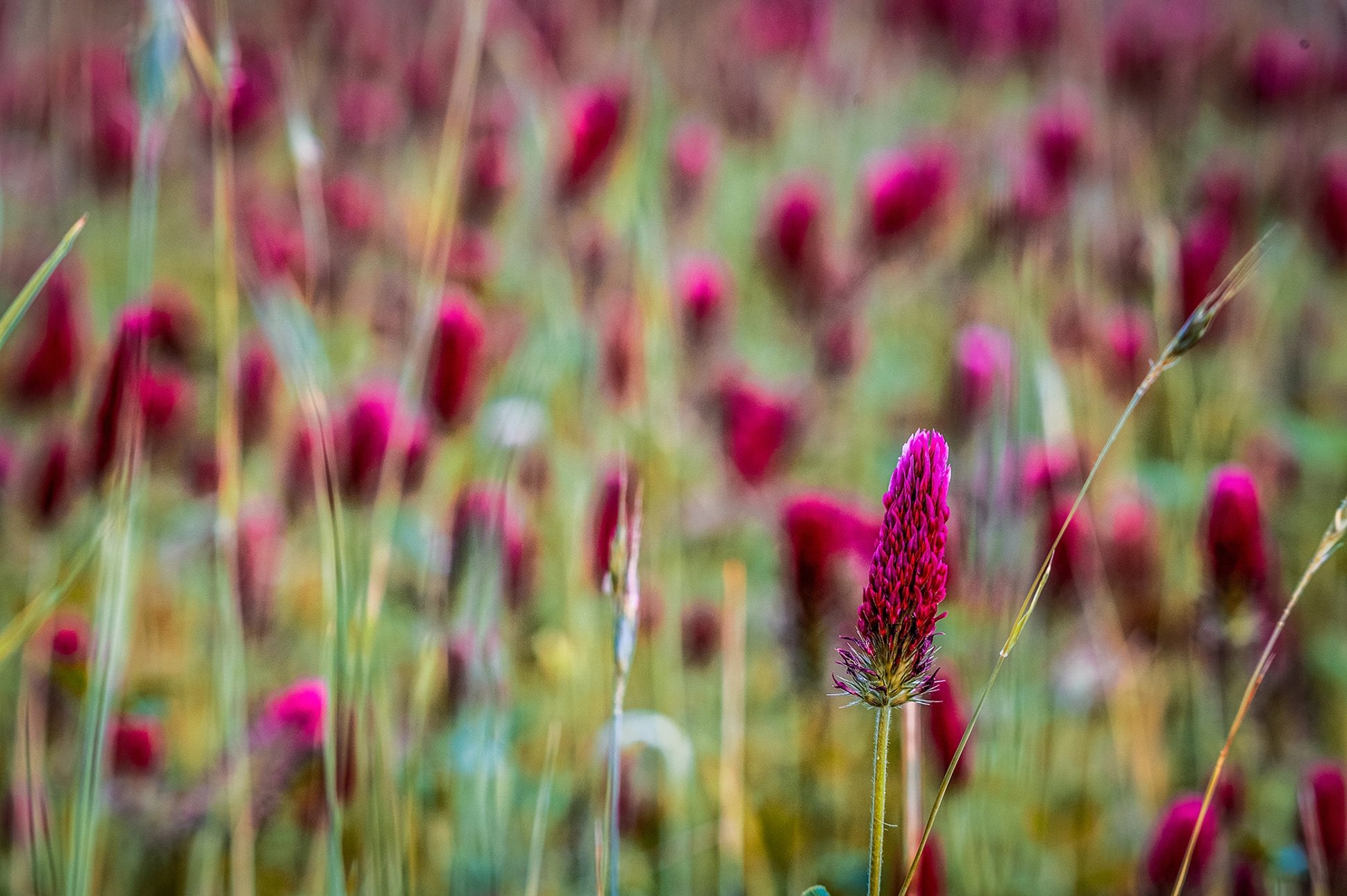
We explored the plantation grounds by foot and vehicle. Moving from spot to spot, calling, listening, walking the trails, Adkins periodically checked his phone to see if the game cameras around the plantation had seen any action.
Late morning on the second day I was kneeling near the truck admiring a field of crimson clover, taking photos and humming the Tommy James & The Shondells tune when Adkins called out that we had birds on camera. We roared out of the field, crushing both crimson and clover in our hot pursuit across the plantation grounds.

The truck crested a hill and there they were: four toms.
“Oh shit there they are what do we do what do we do?” Adkins asked as he cranked the wheel, swinging the old Tahoe in an arch around behind a small copse on the other side of a ridge. His words were delivered in jest; he knew what to do.
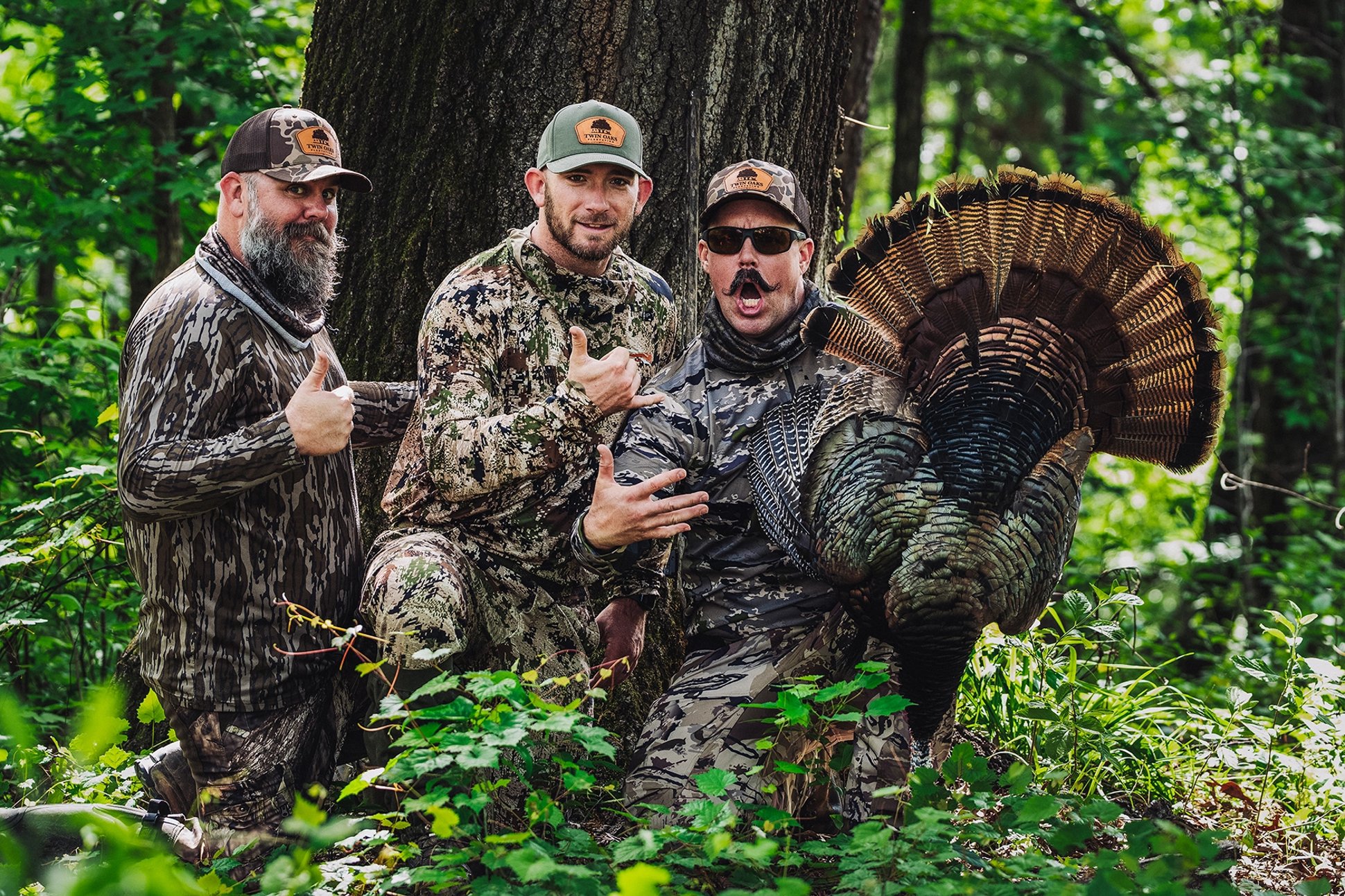
We belly-crawled up the hill. I stopped and sat up, cross-legged, shotgun in position, arms braced against my knees, vision tunneled and shaking with adrenaline. Adkins crawled the decoy level with the top of the hill, pressing the spike into the ground, before retreating a few feet.
I couldn’t see anything over the hill; then he hit the call. Four red heads popped up in the distance. I could just make them out through the grass. They ran, covering what seemed like 100 yards right to the top of the hill, bunched together. They stopped, suspicious. Time stopped.

My mind wandered for a nanosecond back to our first day at the lodge while patterning the Benelli shotguns when I asked Doughty where, specifically, was the best place to shoot a turkey. He told me, “In the face.”
Adkins whispered from his belly, “Pick one, and shoot it.” So, I did. Right in the face.
A Delicious Aftermath
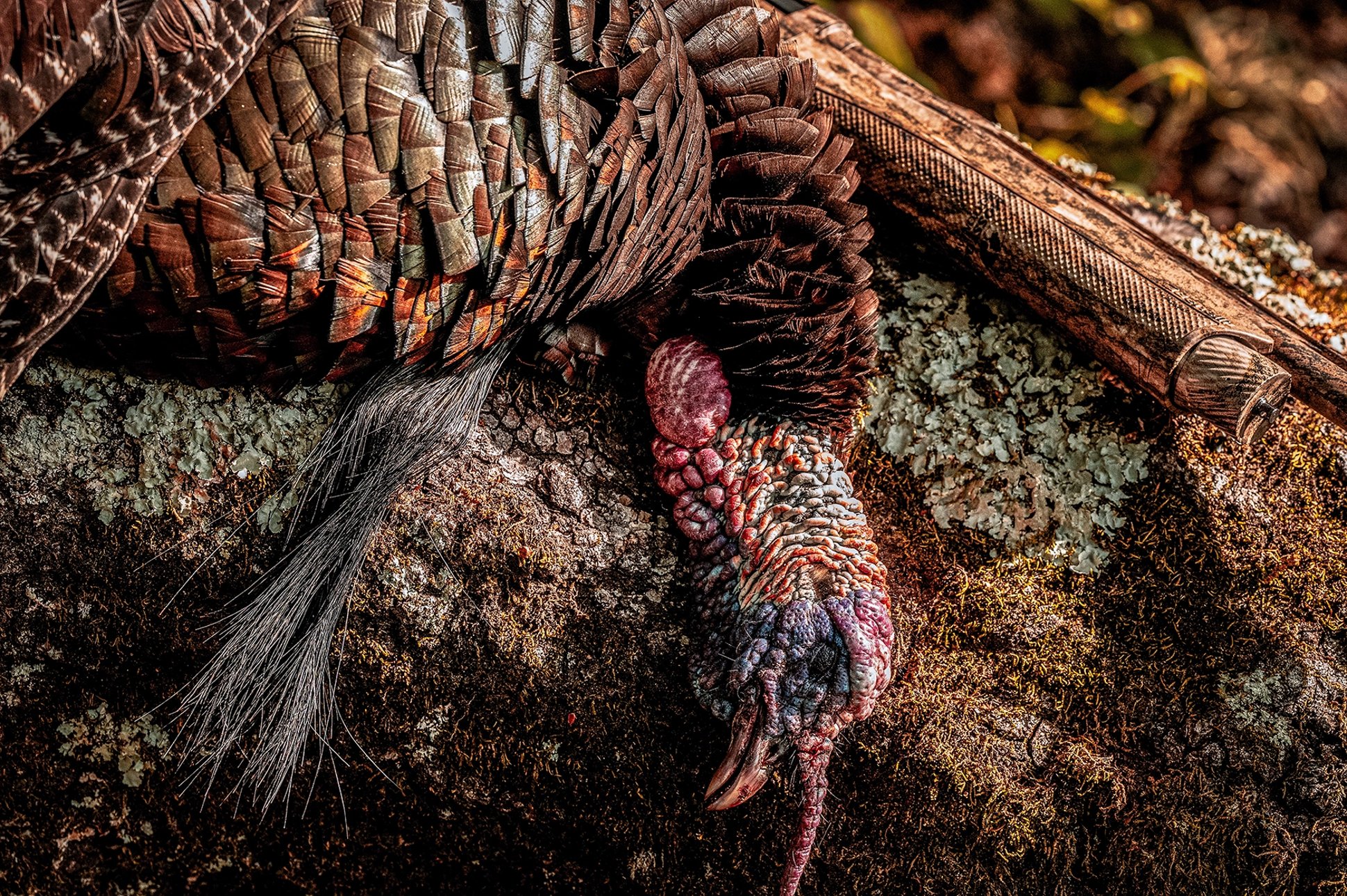
That afternoon Doughty worked on preparing dinner for the group while I toured around Sedgefields Lakes Plantation, learning about field trials. So not only did Doughty give me first shot, he also cleaned and removed the breast meat from my turkey to include with dinner that night.
The turkey breast was butterflied thin and rolled with cream cheese, spinach, sun-dried tomatoes, and wild mushrooms with a bourbon glaze. Also included were barbequed quail with blueberry bourbon barbeque sauce, three cheese mashed potatoes with homemade breadcrumb topper, and roast bourbon brussel sprouts with parmesan and bacon.
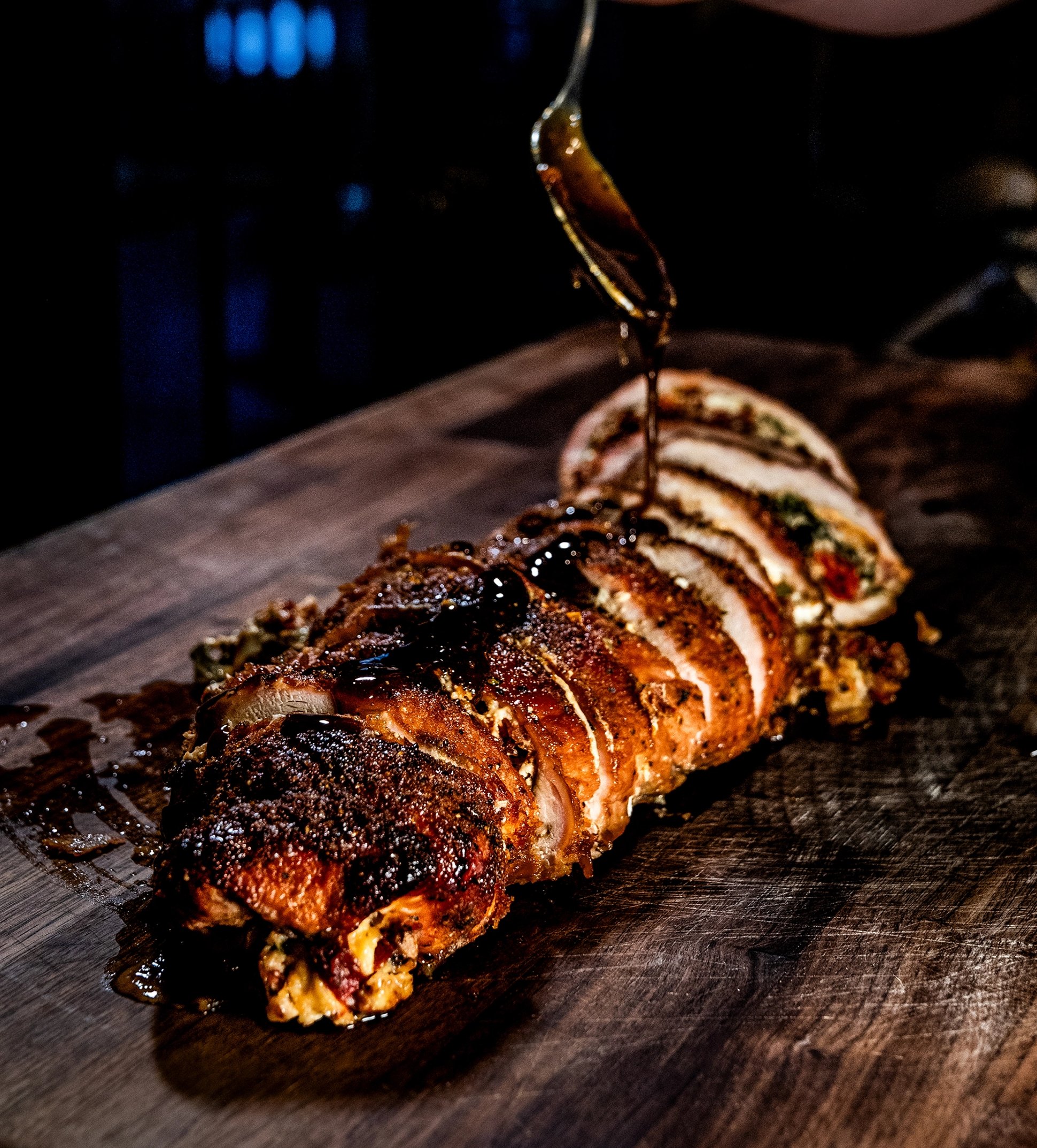
If you are sensing a bourbon-theme, that is because the gentlemen from Conecuh Ridge Distillery joined that night to sample us on Clyde May’s Whiskey, which is the official state spirit of Alabama.
Bronze Star and Purple Heart recipient, Clyde May was a moonshiner in Alabama, getting his distilling start in the late 1940’s. Based in Bullock County near Union Springs, May’s reputation for quality whiskey spread fast through the region.
Other than an eight-month stretch in federal prison for bootlegging in the 1970’s, May distilled small-batch moonshine until the end and after his passing his son and grandson turned his legacy into a legal product, officially launching Clyde May’s Whiskey in the early 2000s.

It was a day, an evening, and a meal to remember. The whiskey went down smooth.
The following morning the plantation bunkhouse was a ghost town. I was the last one standing, so to speak. Everyone else was up and out early, catching planes back home to various places around the country, but not me. Not yet. I still had some Black Belt adventuring to do.
Lake Eufaula: Chasing Big Alabama Bass

The lake at Shenandoah Plantation maintained a healthy population of largemouth bass that any angler in Arizona would be happy to put in the live well. I harassed a few with a plastic worm on my first afternoon there, and was happy to have the opportunity, but there is something about seeing fish feeders occasionally blast out an arching fan of pellets to waiting mouths that make the act of catching those pet-fish seem less special.
I needed some of that glorious big-lake action that Alabama is known for, and that was my next quest.
While it is known officially as the Walter F. George Reservoir, Lake Eufaula (you-FALL-ah) was created by the U.S. Army Corps of Engineers in the 1960’s on the Chattahoochee River. The lake extends about 80 miles north of the Walter F. George Lock and Dam, which provides hydroelectric power and flood control for the region. The project was approved by congress in 1946, but it took years of lobbying and engineering before the project got off the ground.
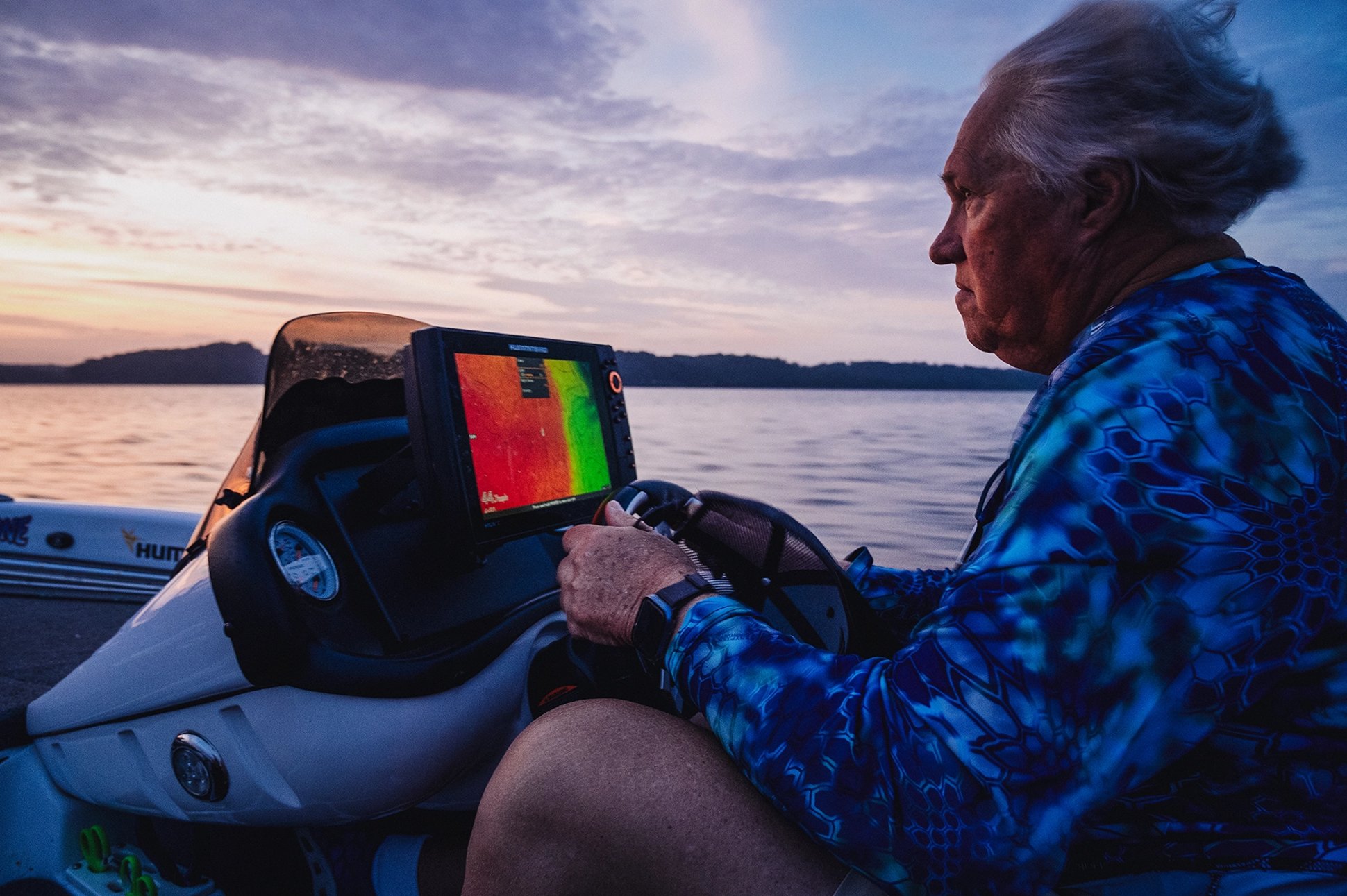
Some of this was due to the need to displace farmers, rural communities, and Native archaeological sites. But once completed, Lake Eufaula became a game-changer for the region. Recreation and tourism boomed, as well as real estate development, while towns like Eufaula on the Alabama side, and Fort Gaines, Georgia, were able to capitalize on the lake’s traffic.
Maybe the biggest single thing to happen involving the reputation of the lake was when legendary bass fisherman Ray Scott founded the Bass Anglers Sportsman Society (B.A.S.S) while living in Eufaula in 1967. The lake gained the reputation as the “Bass Fishing Capital of the World” in the 1970s and 1980s.
Crappie Time
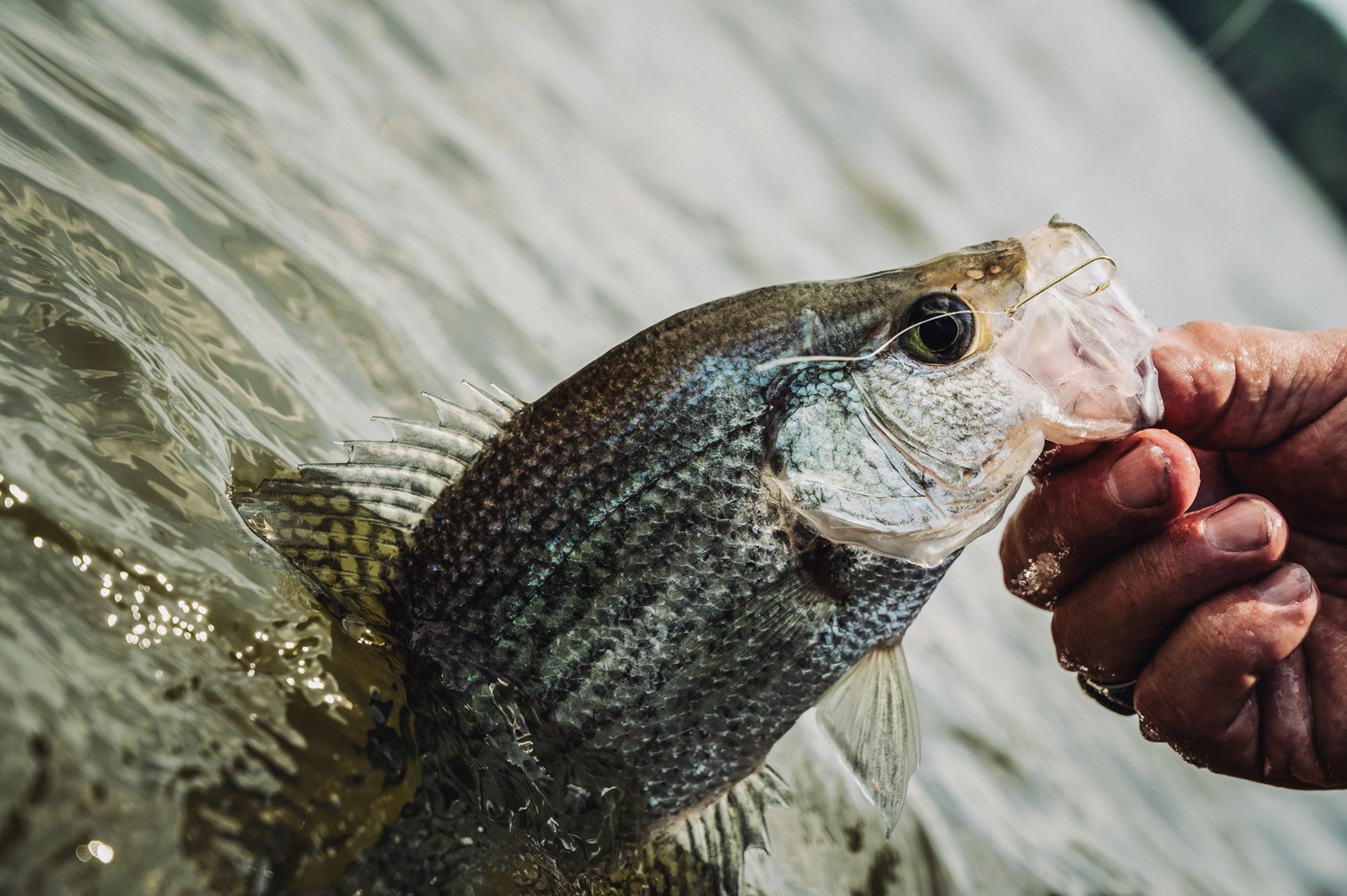
I left the plantation and headed for Eufaula to meet a man named Mark Martin at the Eufaula Yacht Club, a seemingly tongue-in-cheek name for the small gated docking structure located behind the historic houses along Eufaula’s main drag.
Martin is retired, with a calm demeanor and an easy smile. An avid tinkerer and inventor, he told me about a past patent-adventure with a “dancing bubblegum machine” and also how he recently invented a non-essential amino acid neutralizing spray for crappie fishing that masks human scent on baits. It’s based on his family’s genetic ability to touch bait without causing fish to be disturbed by the human scent.
Martin also spends a decent amount of time dragging tree trimmings out on his 30-year-old Ranger bass boat to sink for structure, which he marks on his GPS.
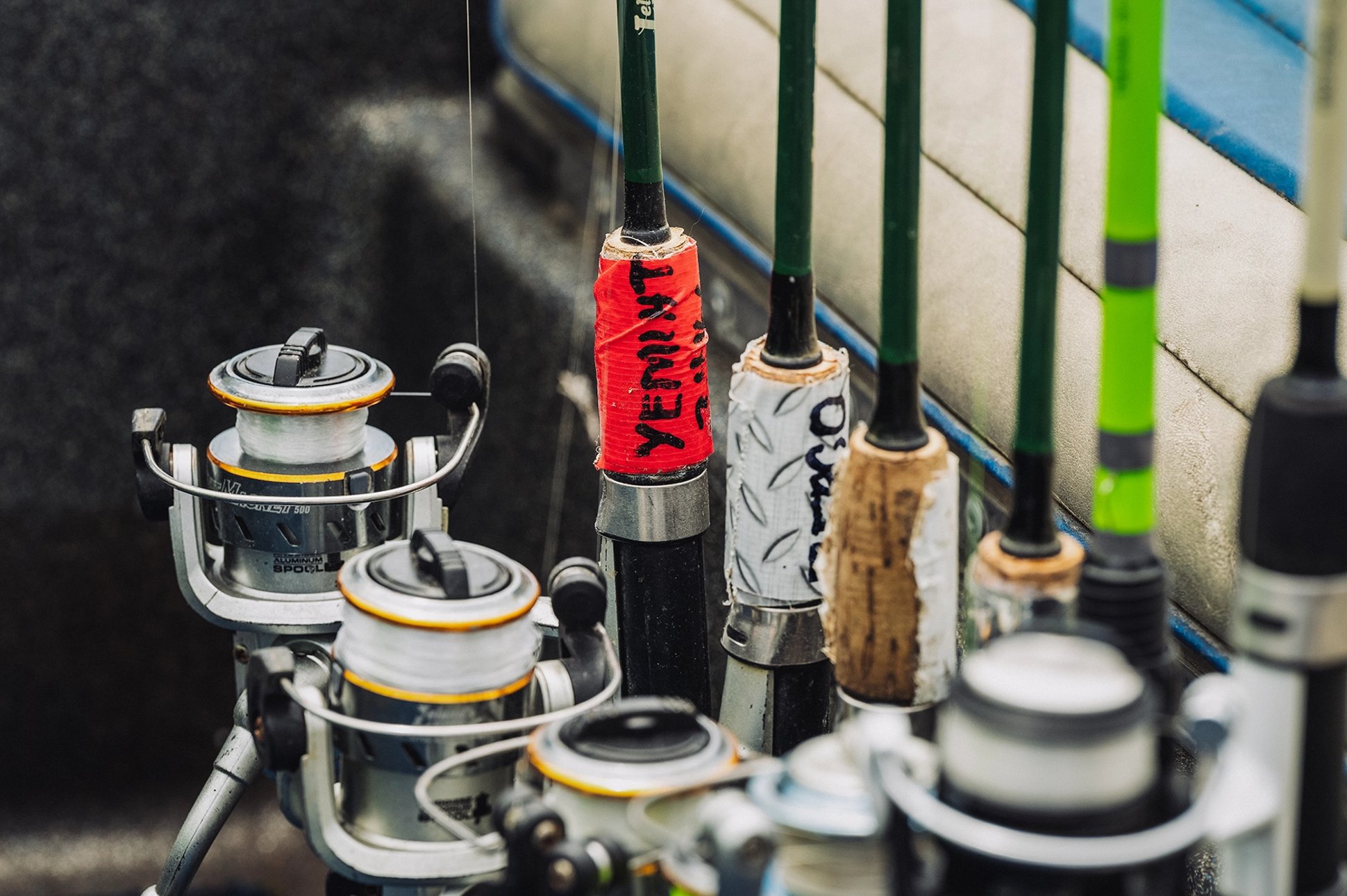
We motored from pile to pile through the early afternoon, catching crappie on minnows with the occasional panicked-wrangling of a catfish on the light tackle.
After a few hours, I had to call it. We had eight in the cooler, with another half-dozen on that were lost for various reasons. Martin apologized for the lackadaisical bite, I told him he had tripled my lifetime number of crappie and I was impressed, regardless. Everyone wants to show the “outdoor journalist” a good time. It’s all a good time for me.
I had to call the crappie-fishing session short because I had dinner plans with Jack Tibbs, the mayor of Eufaula, and the Chamber of Commerce Executive Director Ann Sparks.
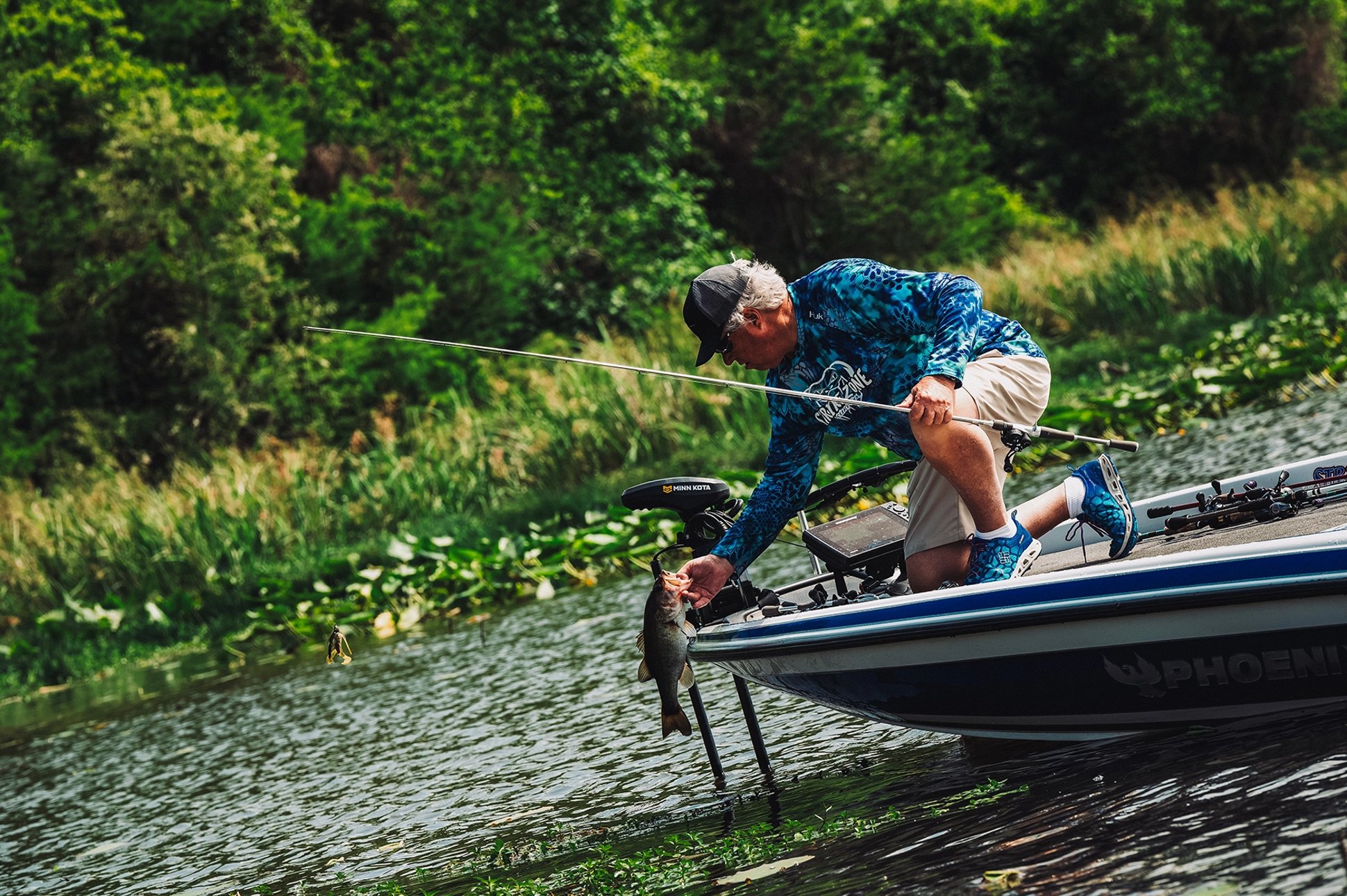
Maybe I buried the lead here, but three-term Mayor Tibbs is, unsurprisingly, a life-long bass fishing enthusiast and was coming by in the morning to take me fishing.
During dinner we talked about Eufaula, the lake, and the history of the region and bass fishing. Tibbs talked about Roland Martin, Johnny Morris, and Tom Mann, the renowned Eufaula angler, lure designer, and TV host who significantly contributed to Eufaula’s reputation in the fishing world. Manny the Bass is a 12-foot fiberglass statue of a leaping largemouth proudly displayed in downtown Eufaula, and it’s named in honor of Mann.
Blame the Corps for the Mediocre Fishing
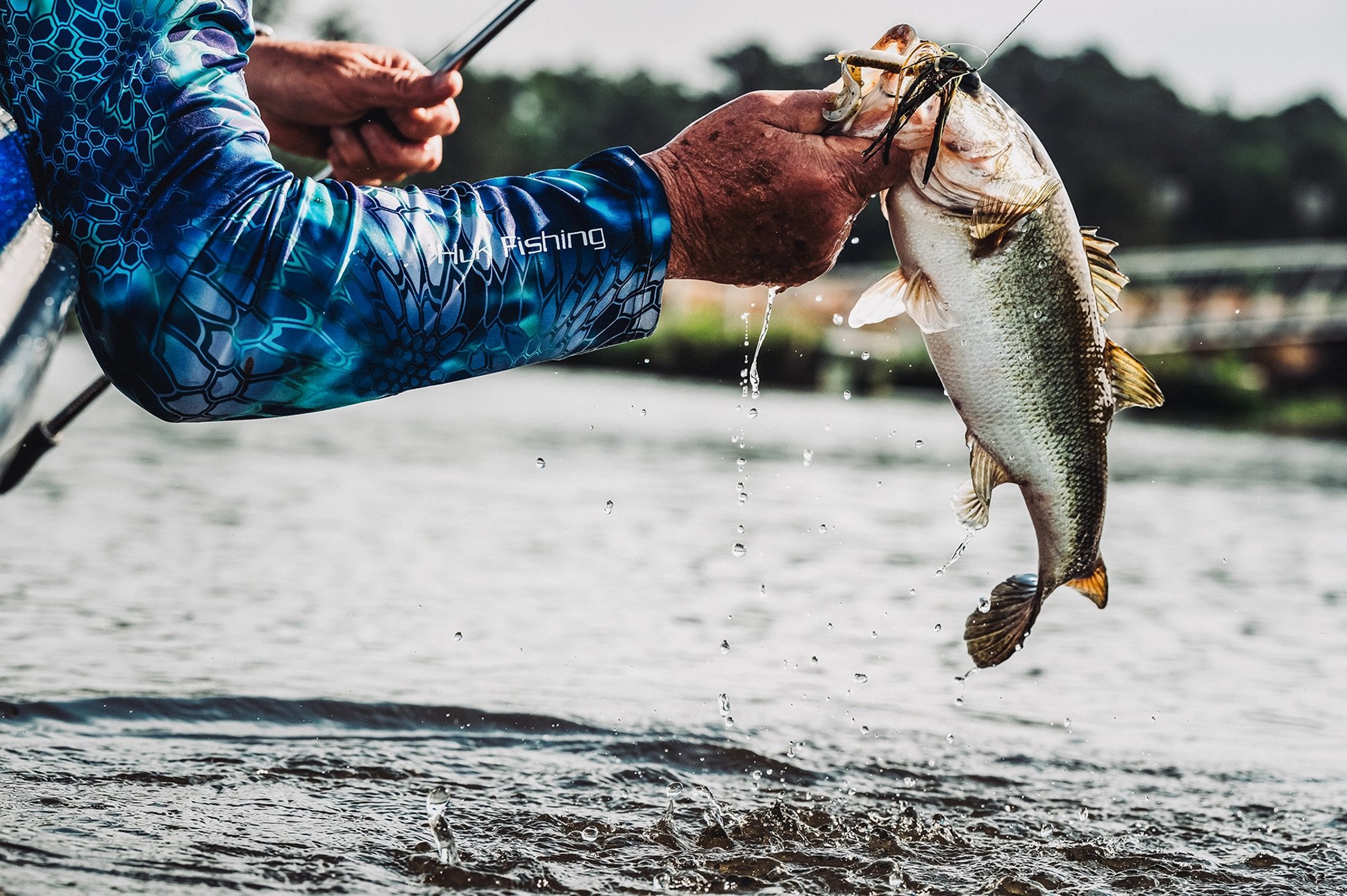
Tibbs asked me if I was a boat-backer. I nodded. I actually pride myself on my trailer backing abilities, which is why I was a little annoyed that I had to make one correction when dropping the mayor and his blue-and-white Phoenix 920ProXP down the ramp. Being a gentleman, he said nothing, and we headed out toward the sunrise.
Our first stop we fished a grass ledge where the birds signaled the potential presence of bait fish. My second cast with a 1/2-ounce Strike King KVD Finesse spinnerbait I caught a feisty hybrid bass, which is a cross between a striped bass and a white bass. These are stocked in the lake, but generally not targeted by largemouth anglers.
Overall, the rest of the day was slow. The mayor explained that, due to a lack of recent rain, the Army Corps was draining water from the lake to generate power, and the decreased water level pushes fish out of the shallows and disrupts the bait. There was also a Delta Airlines tournament going on, adding pressure.

As we fished around the lake, we talked about the historic properties, the good industry base, and the tourism business that makes Eufaula what it is.
“I don’t know if I would be mayor if I didn’t have a lake here,” he said. “Makes the job a little easier.”
A fisherman since birth, Tibbs was hooked at an early age. “My dad with 13 bass boats, fifteen pickup trucks, hundreds of thousands of dollars in tackle, and here I am.”
We caught a handful of largemouth near the end of the morning. By we, I mean Mayor Tibbs. It seems the dropping water had disrupted things more than he anticipated. He called around, and it was the same everywhere.
“17 pounds is leading that tournament,” he told me. “Two weeks ago, 17 pounds would have been in 25th place.”

Around noon, he dropped me at a dock near my hotel, where I thanked him for the awesome day. I understand the fickleness of fish, and the concept “should have been here yesterday” is a perpetual issue when trying to prove the adequacy of a body of water on a limited timeline.
That afternoon I drove up to Columbus, Georgia, where I borrowed a fly rod and fished the Alabama bank of the Chattahoochee River looking for stripers. I caught a spotted gar, instead. So it goes.
Final Thoughts and Thanks
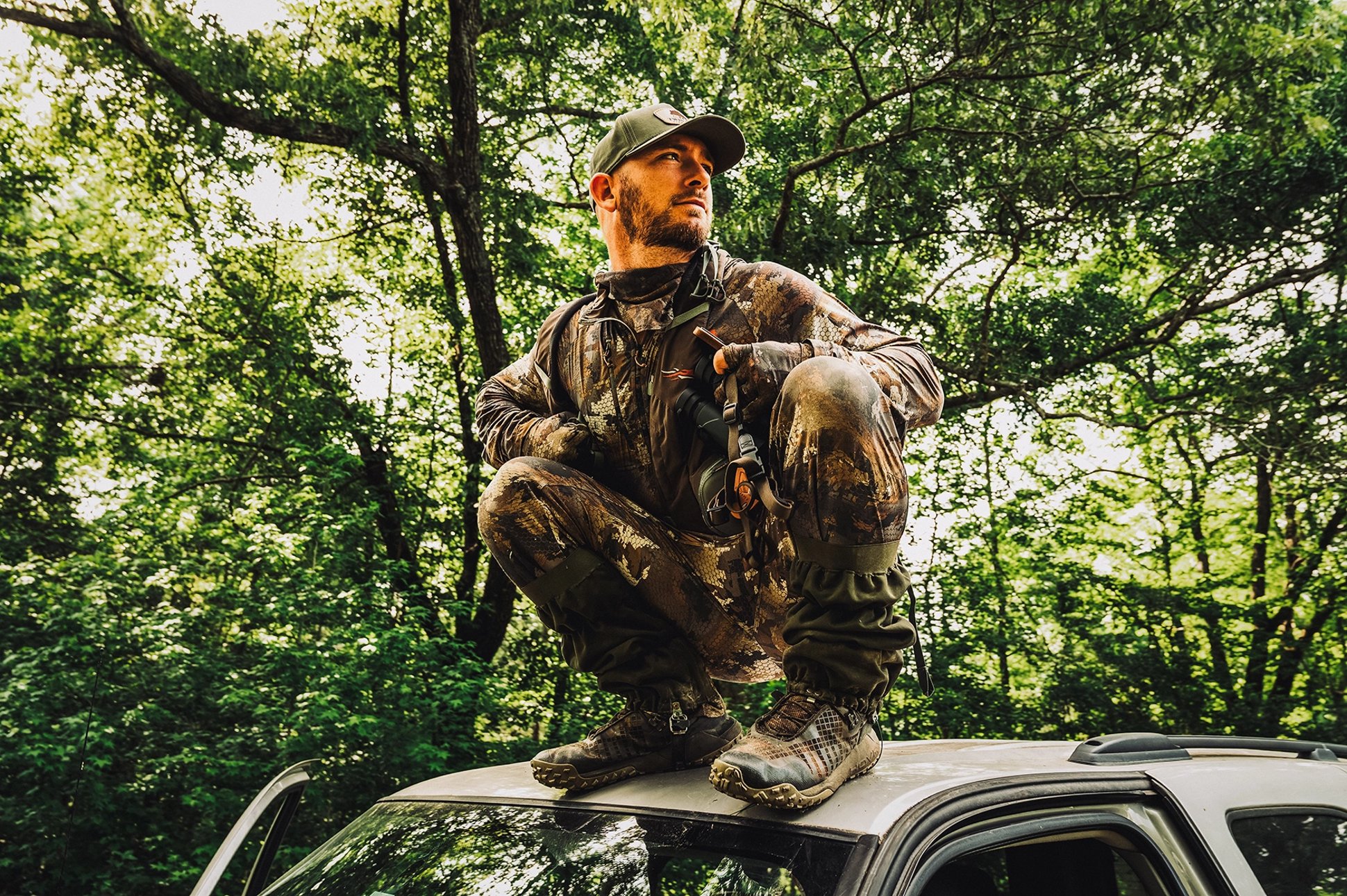
The Black Belt of Alabama is truly a special place. Especially when coming from the southwestern deserts of Arizona. The colors, smells, wildlife, history, and people are different in all the right ways. It’s truly a sportsman's paradise.
A big thanks to Pam Swanner of ALBBAA for setting up the trip and all my fishing adventure plans. When I got on the plane from Arizona I sure did not expect to go fishing with a mayor.
Thanks, also, to all the other sponsors of the adventure, including POMA, Benelli USA, Riton Optics, Twin Oaks Plantation, Shenandoah Plantation, Black Belt Strutter Calls, NWTF, and Clyde May’s.
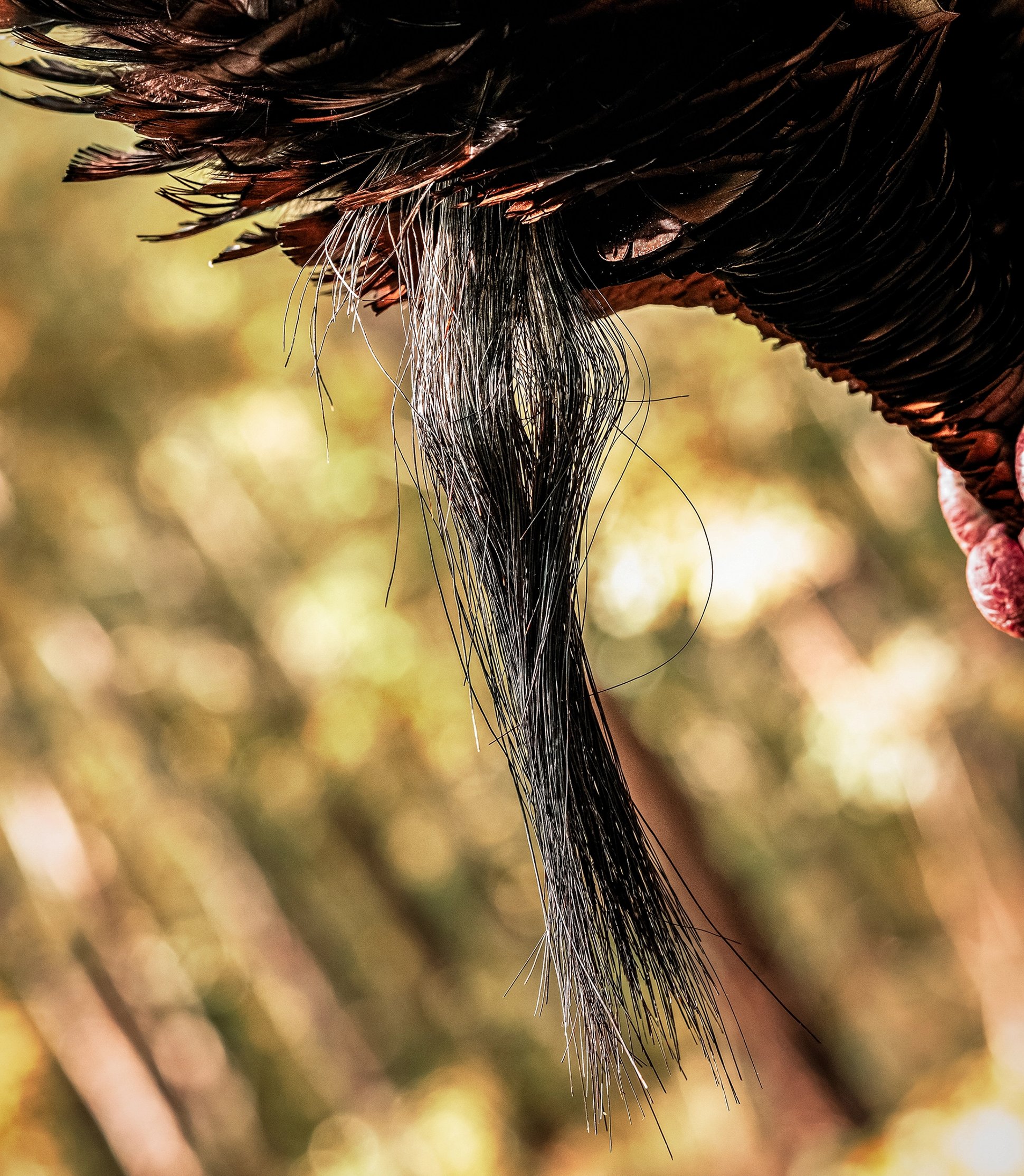
And a special thanks to Jeremiah Doughty for the selfless sportsmanship and the great dinner. I owe you, sir. And to our Twin Oaks Guide Trey Adkins for the knowledge and the hustle, manufacturing success during late-season hunting.
The regional manager from Conecuh Distillery gave me his card and told me to come back and shoot a deer on his property. I just might do that. And while I am at it, I bet Mayor Tibbs wouldn’t mind giving me a second chance at the largemouth in Eufaula.
I will see the Black Belt again.
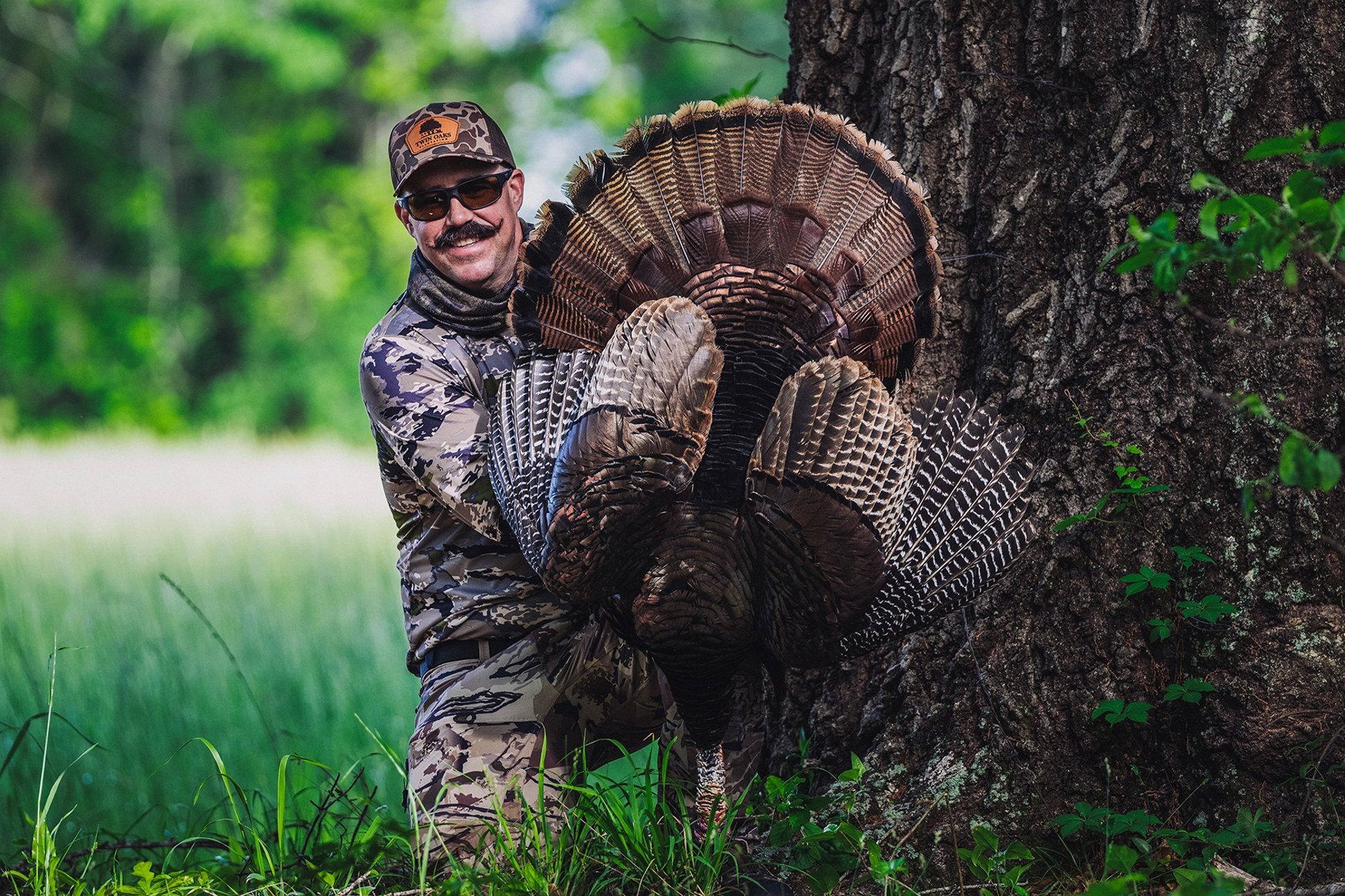
A Whiskey Drink Recipe from the Trip
Named for the war hero turned rural moonshiner Clyde May, this series of Alabama Style Whiskey is the Official State Spirit of Alabama. Available in Alabama Style, Special Reserve 110 Proof, Cask Strength 13-year, Straight Rye and Straight Bourbon Whiskey, this Alabama-born spirit has the awards to back up its name.
Black Belt Bourbon Smash (designed by Jeremiah Doughty)
- 2 ounces Clyde May’s Whiskey
- 1 ounce Fresh lemon juice
- 1 ounce maple syrup
- 3-4 fresh mint leaves
Combine over ice and enjoy!
